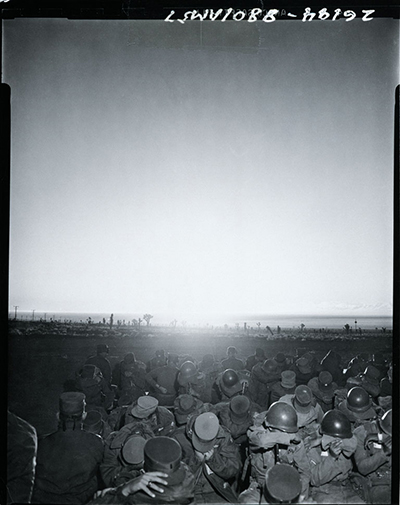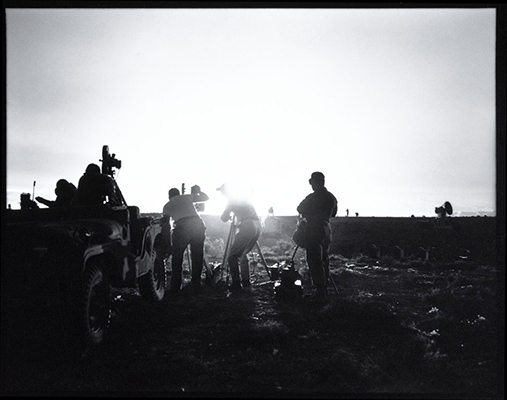A while ago I saw a programme about Nobel prize winning physicist Richard Feynman who worked on the Manhattan project to build the first nuclear bomb. He said, "They gave out dark glasses that you could watch it with. Dark glasses! Twenty miles away, you couldn’t see a damn thing through dark glasses. So I figured the only thing that could really hurt your eyes (bright light can never hurt your eyes) is ultraviolet light. I got behind a truck windshield, because the ultraviolet can’t go through glass, so that would be safe, and so I could see the damn thing.
Time comes, and this tremendous flash out there is so bright that I duck, and I see this purple splotch on the floor of the truck. I said, “That’s not it. That’s an after-image.” So I look back up, and I see this white light changing into yellow and then into orange. Clouds form and disappear again – from the compression and expansion of the shock wave.
Finally, a big ball of orange, the center that was so bright, becomes a ball of orange that starts to rise and billow a little bit and get a little black around the edges, and then you see it’s a big ball of smoke with flashes on the inside, with the heat of the fire going outwards.
All this took about one minute. It was a series from bright to dark, and I had seen it. I am about the only guy who actually looked at the damn thing – the first Trinity test. Everybody else had dark glasses, and the people at six miles couldn’t see it because they were all told to lie on the floor. I’m probably the only guy who saw it with the human eye."
Rather him than me!



